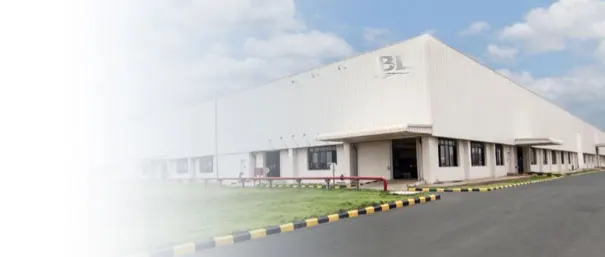JIS SUS410 Stainless Steel: Martensitic Grade for High Strength & Moderate Corrosion Resistance
JIS SUS410 (equivalent to AISI 410) is a martensitic stainless steel grade characterized by its high strength, hardness, and moderate corrosion resistance. With a chromium content of 11.5-13.5% and low carbon (≤0.15%), it offers a cost-effective alternative to austenitic grades for applications requiring wear resistance, heat resistance up to 700°C, and post-heat-treatment hardening. This article explores its chemical composition, mechanical properties, heat treatment processes, industrial applications, and key considerations for material selection.
1. Chemical Composition (JIS G4303 Standard)
| Element | Content Range | Function |
|---|---|---|
| Carbon (C) | ≤ 0.15% | Enhances hardness and strength via martensite formation; higher carbon increases wear resistance but reduces weldability |
| Chromium (Cr) | 11.50 – 13.50% | Provides corrosion resistance via passive Cr₂O₃ film; lower than austenitic grades but sufficient for mild environments |
| Manganese (Mn) | ≤ 1.00% | Improves hot workability and deoxidation; minimizes sulfur-induced hot cracking |
| Silicon (Si) | ≤ 1.00% | Enhances oxidation resistance at elevated temperatures; aids in deoxidation during melting |
| Phosphorus (P) | ≤ 0.040% | Impurity element; controlled to prevent embrittlement and reduce toughness loss |
| Sulfur (S) | ≤ 0.030% | Impurity; minimized to avoid hot shortness and improve machinability in resulfurized variants |
| Nickel (Ni) | ≤ 0.75% | Residual element; limited to maintain martensitic structure and cost efficiency |
2. Mechanical Properties (Annealed vs. Hardened States)
| Condition | Tensile Strength (MPa) | Yield Strength (MPa) | Elongation (%) | Hardness (HB) |
|---|---|---|---|---|
| Annealed (A) | ≥ 440 | ≥ 205 | ≥ 20 | ≤ 200 |
| Quenched & Tempered (Q&T) (Tempered at 200-400°C) | ≥ 700 | ≥ 450 | ≥ 12 | 200-300 |
| Quenched & Tempered (Q&T) (Tempered at 500-650°C) | ≥ 550 | ≥ 350 | ≥ 16 | 150-250 |
3. Heat Treatment Processes
- Annealing: Heat to 800-900°C, slow furnace cooling to ≤600°C (20°C/hour) to soften for machining. Results in a ferritic-pearlitic microstructure with maximum ductility.
- Hardening (Quenching): Austenitize at 950-1050°C for 30-60 minutes, followed by oil or air quenching to form martensite. Critical for achieving high strength (up to 700 MPa tensile strength).
- Tempering: Reheat quenched parts to 200-700°C (temperature depends on desired hardness-toughness balance). Low-temperature tempering (200-400°C) retains hardness; high-temperature (500-700°C) improves toughness.
- Stress Relieving: Heat to 600-750°C for 1-2 hours to reduce residual stresses after welding or machining without significant softening.
4. Key Industrial Applications
Cutlery & Kitchenware
Knife blades, scissors, and surgical instruments — hardened to 48-55 HRC for sharpness retention and corrosion resistance in mild environments.
Automotive Components
Exhaust manifolds, valve seats, and trim parts — resists oxidation at elevated temperatures (up to 700°C) and withstands thermal cycling.
Petrochemical & Power Generation
Steam turbine blades, pump shafts, and fasteners — combines strength with resistance to mild corrosive media (e.g., fresh water, air).
Mechanical Engineering
Gears, bolts, and wear plates — heat-treated to 300-400 HB for abrasion resistance in industrial machinery and tooling.
5. Comparison with Related Martensitic Grades
| Grade | Carbon (%) | Hardness (Q&T) | Corrosion Resistance | Typical Use |
|---|---|---|---|---|
| SUS410 | ≤ 0.15 | 200-300 HB | Moderate (mild atmospheres) | General-purpose; cutlery, fasteners |
| SUS420J2 | 0.26-0.40 | 45-55 HRC | Low (requires polishing) | Surgical tools, high-wear parts |
| SUS431 | ≤ 0.20 | 250-350 HB | Higher (Ni addition) | Aircraft fittings, marine hardware |
6. Material Selection & Processing Guidelines
- Corrosion Limitations: Avoid use in chloride-rich environments (e.g., seawater) or strong acids; SUS410 is susceptible to pitting and crevice corrosion. For such conditions, consider SUS304 or SUS316.
- Welding: Preheat to 200-300°C and post-weld temper at 600-750°C to prevent cold cracking. Use AWS E/ER410 filler metal; avoid excessive heat input.
- Machining: Best performed in the annealed state (HB ≤ 200). Hardened material requires carbide tooling and reduced cutting speeds.
- Surface Finishing: Passivation (nitric acid treatment) improves corrosion resistance. Polished surfaces (e.g., #4 or #8 finish) enhance aesthetics and cleanability.
- Quality Certification: Verify compliance with JIS G4303 or equivalent ASTM A276/A479 standards. Request mill test reports (MTR) for chemical analysis and mechanical properties.
7. Request a Quote for JIS SUS410 Stainless Steel
Need customized JIS SUS410 stainless steel products in sheets, bars, or coils? Our team provides precision-cut materials with heat treatment and surface finishing options tailored to your specifications. Contact us for competitive pricing and technical support.
.content-wrap { font-family: Arial, Helvetica, sans-serif; color: #333; line-height: 1.8; }
.article-title { font-size: 28px; color: #222; font-weight: 700; margin: 0 0 30px; padding-bottom: 15px; position: relative; border-bottom: 2px solid #eee; }
.article-title::after { content: “”; position: absolute; left: 0; bottom: -2px; width: 120px; height: 2px; background-color: #2c5282; }
.article-intro { font-size: 16px; color: #444; margin: 0 0 40px; text-align: justify; }
.section-title { font-size: 22px; color: #2c5282; font-weight: 600; margin: 50px 0 25px; padding-left: 15px; border-left: 4px solid #2c5282; }
.table-container { width: 100%; overflow-x: auto; margin: 0 0 30px; }
.spec-table, .compare-table { width: 100%; border-collapse: collapse; background-color: #fff; box-shadow: 0 2px 5px rgba(0,0,0,0.05); }
.spec-table th, .spec-table td, .compare-table th, .compare-table td { padding: 12px 15px; border: 1px solid #eee; text-align: left; }
.spec-table th, .compare-table th { background-color: #f8f9fa; color: #2c5282; font-weight: 600; }
.spec-table tr:hover, .compare-table tr:hover { background-color: #fafafa; }
.property-list, .process-list, .precaution-list { padding-left: 20px; margin: 0 0 35px; }
.property-list li, .precaution-list li { margin: 0 0 12px; font-size: 15px; }
.process-list li { margin: 0 0 18px; font-size: 15px; }
.property-list strong, .process-list strong, .precaution-list strong { color: #2c5282; }
.application-grid { display: grid; grid-template-columns: repeat(auto-fit, minmax(280px, 1fr)); gap: 25px; margin: 0 0 40px; }
.application-item { padding: 20px; background-color: #fafafa; border-radius: 6px; border: 1px solid #eee; }
.application-item h3 { font-size: 18px; color: #2c5282; margin: 0 0 12px; font-weight: 600; }
.application-item p { font-size: 14px; color: #555; margin: 0; }
.quote-cta-section { margin: 60px 0 20px; padding: 30px; background-color: #f8fafc; border-radius: 8px; border: 1px solid #e2e8f0; }
.quote-cta-content { max-width: 800px; margin: 0 auto; text-align: center; }
.quote-cta-content p { font-size: 16px; color: #475569; margin: 0 0 30px; line-height: 1.8; }
.quote-cta-btn { display: inline-block; padding: 12px 35px; background-color: #2c5282; color: #fff; font-size: 16px; font-weight: 600; text-decoration: none; border-radius: 4px; transition: background-color 0.3s ease; }
.quote-cta-btn:hover { background-color: #1e3a8a; }


